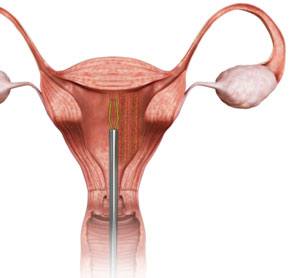Endometrial Ablation

What is Endometrial Ablation?
Endometrial ablation is a procedure to destroy (ablate) your uterine lining, also referred to as the endometrium. This is the lining that sheds to cause menstrual bleeding. Ablation may reduce or stop the menstrual flow completely. The procedure does not involve any cuts or incision.
Indications for Endometrial Ablation
Your doctor may suggest endometrial ablation if you have:
- Unusually heavy periods that requires changing sanitary pads every hour.
- Periods that last longer than eight days.
- Anemia from excessive bleeding.
Your doctor might not recommend an endometrial ablation if you have:
- Certain abnormalities of the uterus.
- Uterine cancer or an increased risk of uterine cancer.
- A pelvic infection.
The procedure is recommended if other treatments such as medications or an intrauterine device (IUD) do not work or not advised.
Endometrial Ablation Procedure
You may have an endometrial ablation performed in your doctor’s office as an outpatient procedure or during a hospital stay. The procedure may or may not require anesthesia. Whether anesthesia is required depends upon the method used. The procedure involves dilatation of your cervix, either with the help of medication or by inserting a series of rods that gradually increase in diameter. Dilatation is done to allow passage of the instruments into the uterine cavity.
Different procedures are used to remove the endometrium. The most common methods used are:
- Electrosurgery: A slender scope is inserted into the uterus and a heated wire loop is passed through the scope to destroy the endometrial lining. This method is usually done with general anesthesia.
- Cryoablation: Extremely low temperature is used to freeze and destroy the endometrium. Ultrasound is used to guide the procedure.
- Free-flowing hot fluid: Heated saline fluid is circulated within the uterus for about 10 minutes which destroys the endometrial lining.
- Heated balloon: A balloon device is inserted through your cervix and then filled with fluid which is heated to destroy the endometrial tissue.
- Microwave: Microwaves are emitted through a slender wand which is inserted through the cervix to heat the endometrial tissue and destroy it.
- Radiofrequency: Radio waves create a current which are channeled through an instrument to target and vaporize the endometrial tissue.
Risks and Complications of Endometrial Ablation
As with any procedure, endometrial ablation is associated with certain risks and complications which include:
- Infection, bleeding or pain
- Damage to nearby organs by heat or cold
- Puncture of the uterine wall by instruments
Related Topics
- Colpocleisis
- Pessary Fitting
- Clomid/Letrazole
- Uterine Septoplasty
- Office Hysteroscopy
- Cervical Biopsy
- Colposcopy
- Endometrial Ablation
- Endometrial Biopsy
- Excision of endometriosis
- Laparoscopy
- Hormone Replacement Therapy (HRT)
- Hysterectomy
- Hysteroscopy
- Intrauterine Device (IUD)
- Laparoscopic Ovarian Cystectomy
- LEEP
- Mona Lisa Touch
- Myomectomy
- Nexplanon
- Pre-conception Planning
- Robotic-Assisted Gynecology Surgery
- Sterilizations
- In-office Ultrasound
- In-office Procedures
